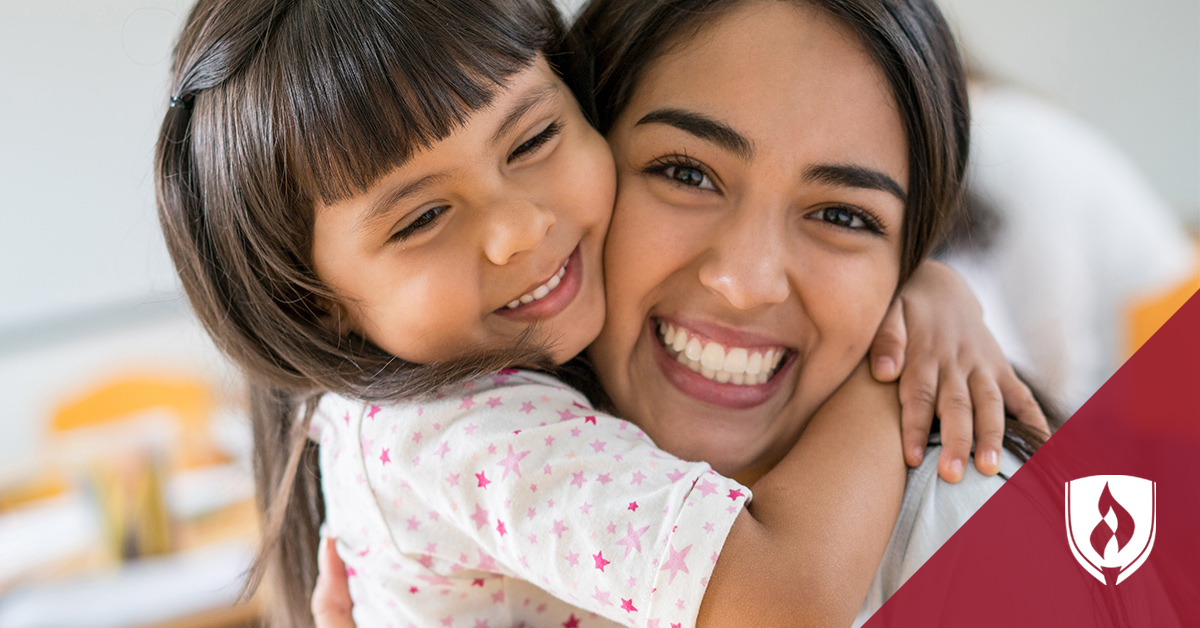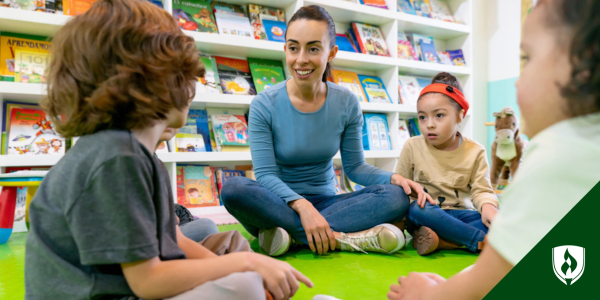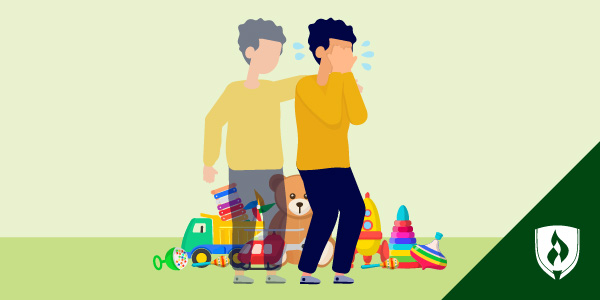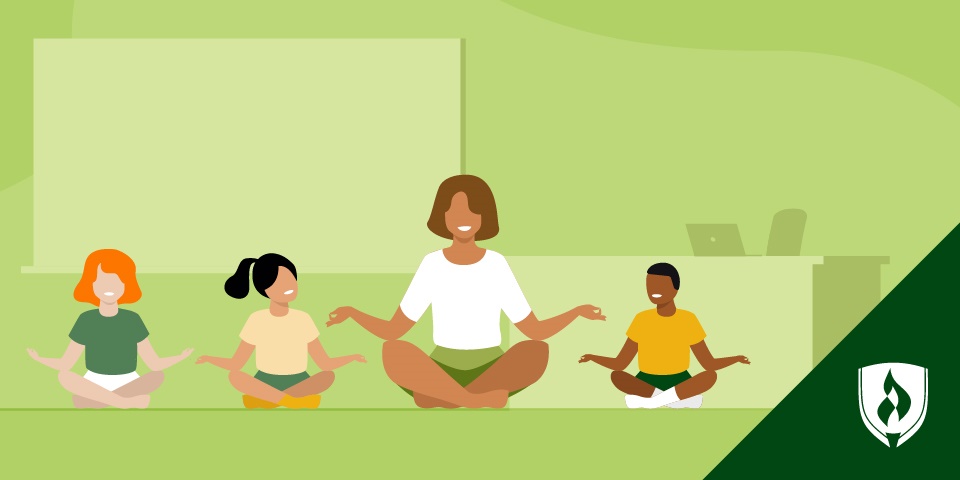Educators Share Their Top Tips for Teaching Gratitude to Kids
By Lauren Elrick on 11/16/2018

It’s easy to go through the motions and teach kids how to be polite. While teaching them to say “please” and “thank you” is certainly a valuable habit, instilling the concept of gratitude in children creates much deeper and long-lasting results.
It can be difficult to help kids grasp the notion of gratitude, especially when they’re young and struggle to understand abstract ideas. Learning gratitude will help kids become more sensitive to the feelings of others, develop empathy, gain perspective and cultivate other life skills that will benefit them and others in the future—so how can you help facilitate that? If you’re hoping to infuse a lifestyle of gratitude in the students you teach—or even in your own children, there are some key ways you can influence the next generation (without turning to perhaps heavy-handed childcare provider gift suggestion lists.)
7 Tips and activities for teaching gratitude to kids
We found some helpful resources, as well as connected with some educators and professionals in the field, to get you some fantastic activities and tips for teaching gratitude to kids. Here are some ideas to consider this Thanksgiving and beyond:
1. Write thank-you letters together
“Model how to write thank-you letters as a class,” suggests Monica Wiedel-Lubinski, executive director of the Eastern Region Association of Forest and Nature Schools. “When a parent or community member visits the class, or when you go on a field trip, encourage the children to express their thanks afterward.”
Not only will this activity inspire gratitude in kids, but it’s also a great, lifelong skill that kids can take with them into their teen and adult years. Activities like this reinforce the practice and help make expressing gratitude second nature.
2. Sharing your “top three” daily
This supremely simple practice is an excellent way to get children in the habit of reflecting on the positive things in their life. At dinnertime or before bedtime, each person takes a turn and lists the three things that happened that day that you appreciated. Whether you’re listing activities you did or people you’re thankful for, naming one’s blessings is sure to help kids gain an ingrained sense of gratitude.
Gratitude also helps alleviate anxiety, so learning how to focus in on the things one is thankful for instead of centering on anxious thoughts is really a helpful skill.
3. Create gratitude placemats
This fun little activity from Mama’s Happy Hive is very hands-on and thankfulness themed. Have the kids pick one person each that they are thankful for and then write down five descriptive words about why they’re thankful for that person. Students will then trace their hands, cut out their “turkey,” and write their five descriptive words on each of the fingers or “feathers.”
Get creative with your placemats and cut out plate and utensil shapes and decorate the whole thing with leaves and autumn colors.
4. Encourage kids to pitch in when they want something
Whether you dole out a real allowance to your own child or a mock allowance to your entire class, a great way to teach gratitude is to have kids pitch in when they want to buy something or receive a certain type of privilege.
Not only will they feel more ownership for whatever they’re purchasing or earning, but they’ll also learn to appreciate the things they have at the same time. Instead of showering kids with “stuff,” teach them the valuable lesson of earning things in moderation and valuing current treasures.
5. Create a thankful tree
This activity from Barefoot on the Dashboard can be stretched out for weeks or completed in a day—but no matter how long it takes, it will help your little ones thinking about what they’re grateful for. Using a brown paper bag, cut out and fashion a trunk with branches. Cut out leaves from colorful construction paper, and allow kids to write what they’re thankful for on each leaf.
Display the tree in a prominent place in your classroom or home as a reminder of all that your class or family has gratitude for.
6. Read books about gratitude
Reading books is not only fun, but it makes a way for further discussion about topics such as gratitude. Take a look at these great books about thankfulness:
- The Thank You Book (An Elephant and Piggie Book) by Mo Willems: This book follows Piggie as she goes on a thank-you escapade and thanks everyone she knows.
- Bear Says Thanks by Karma Wilson: This book is unique in that it encourages kids to find creative ways to thank others—such as cooking them a nice dinner. Even though Bear has nothing in his cupboards to share, the celebration goes on.
- Those Shoes by Maribeth Boelts: This book helps kids understand the difference between “wanting” and “needing” something. It also helps them grasp having gratitude for things one already has and giving to others in need.
7. Get involved in your community
“We often do community service projects with a team we created called the Heritage Helping Hands,” says Andres Portela, public relations manager with Heritage Elementary School. “This Helping Hands group encourages students to be happy while giving back to their community. We also show the students what something is worth by showing them how their service affects the community around the school.”
Whether it’s volunteering at a food shelter, raking leaves or picking up trash on the side of the highway, getting kids involved in the community they live in can teach valuable lessons about gratitude. Not only connect with those in the local area they live in, but they also get to see the direct impact and gratitude their service has on others.
How do you model gratitude?
Gratitude is a skill that both kids and adults alike would do well to learn more about. Acting as a role model and showcasing your thankfulness is one of the most helpful things grownups can do to teach children about gratitude.
There’s no doubt about it—these early childhood years are essential for instilling important traits, habits and practices that deal with expressing gratitude. But that’s just part of the value of early childhood education. Learn more about its significance in our article, “4 Reasons You Can’t Ignore the Importance of Early Childhood Education.”




